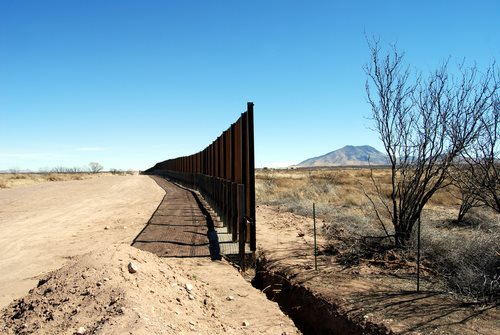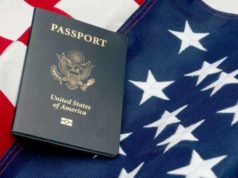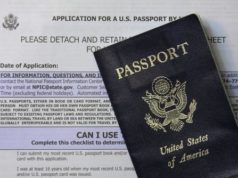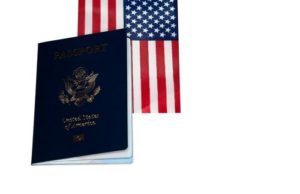
Understanding the Immigration Acts: A Comprehensive Guide
For centuries, people have traveled across the globe in search of better economic opportunities, education, and a better quality of life. The act of crossing international boundaries to take up residency in a foreign country, especially for permanent settlement, is Immigration. Throughout the world, governments closely regulate the flow of this movement; some countries have strict entry procedures that involve an exhaustive process and extensive documentation before being granted citizenship or residency.
The United Kingdom (UK) is one of such countries with a long history of regulating immigration as part of its national policy. This process involves several Acts of Parliament passed over the years, and each has had a considerable impact on the country’s immigration policies and procedures.
In this comprehensive guide, we shall explore various UK immigration Acts, highlight their key provisions and impact and provide new updates on how these policies affect immigrants in the country today.
The First Immigration Act 1905:
The first piece of legislation to regulate immigration in the UK was the 1905 Immigration Act. The act gave powers to immigration officers to examine all foreign nationals, demand documentation, and deny entry to any immigrant deemed potentially harmful to the country’s interests.
The act required immigrants to provide documentation, such as proof of their admission into the country, and a bond to ensure their return to their country of origin. Immigrants were also required to enter through designated ports to ensure proper scrutiny by immigration officers. The goal of the act was to limit the influx of foreign nationals into the UK and prevent people from exploiting the country’s scarce resources.
The Commonwealth Immigrants Act 1962:
The Commonwealth Immigrants Act 1962 was proposed to limit the number of citizens from the Commonwealth countries entering the UK. The act marked significant changes and restriction to the immigration process, such as requiring Commonwealth citizens intending to settle in the UK the proper documentation from the UK High Commission in their country of origin.
The act also limited the number of Commonwealth immigrants coming to the UK yearly to 15000 and required them to possess a job offer before being allowed to enter. The act also imposed the principle of patriality or restricting entry to immigrants with a British grandparent, parents, or spouse.
The 1968 Immigration Act:
The 1968 Immigration Act extended the Commonwealth Immigrants Act that preceded it, reinforcing tight immigration policies. The main aim of the act was to promote integration within the UK by denaturalizing citizens who had acquired their citizenship fraudulently and making changes to the asylum process.
Under the act, anyone born in the UK to parents who were not British citizens became undocumented and had to apply for citizenship. The act also gave powers to an immigration officer to hold an arrested person in custody before decision-makers made a decision on their case.
The Immigration Act 1971:
The 1971 Immigration Act sealed the regulations and laws on immigration in the UK that had evolved since the first act was passed in 1905. The Act established the concept of patriality, which allows British citizens, Commonwealth citizens with a close relative living in the UK, or those with a suitable job offer in the UK to enter the country.
The Act also established a framework for asylum seekers and created a way for people to appeal against a decision by an immigration officer, which was not available in earlier acts. The Act ensured that most residents in the UK were issued with a right of abode and bestowed discretionary powers to grant citizenship through Crown discretion.
The Immigration and Asylum Act 1999:
The Immigration and Asylum Act 1999 saw significant changes made to the immigration regulations and processes in the UK. The Act shifted the emphasis from entry control to removals by establishing a new criminal offense of failure to comply with immigration control.
It also led to the restructuring of the asylum system, creating a one-stop-shop model instead of the previous parallel system. The Act also established a mechanism for dealing with refugees by imposing the concept of ‘unsafe third countries,’ called the safe third country principle, enabling the UK to transfer asylum seekers to different countries for processing.
The act introduced Human Rights legislation and the ability to employ harsher immigration measures against illegal and undocumented immigrants, increasing the power of immigration service and border control.
The Immigration, Asylum, and Nationality Act 2006:
The Immigration, Asylum, and Nationality Act 2006 reinforced the regulations set up by the 1999 legislation by introducing new regulations to strengthen UK immigration policies around border controls, illegal immigration, asylum, and settlement law.
The act aimed to make the UK immigration system more consistent and transparent while creating a new points-based system for economic migrants. The act imposed fines and harsher penalties, including possible prison sentences for employers employing undocumented or illegal immigrants.
The act also introduced British citizenship tests to ensure that immigrants have a sufficient knowledge of English, British life, and UK history before obtaining full citizenship status.
The Immigration Act 2014:
The Immigration Act 2014 updated the UK immigration policies as a continuation of the strategy to maintain a robust border control system. The act aimed to make the UK less attractive to illegal immigrants, and the government focused on removing illegal immigrants by obliging landlords to check tenants’ immigration status and banks to check the status of bank account holders.
The act also increased the powers of border control by introducing child penalties, detention, and deportation measures, making the UK a hostile place for illegal immigrants. The legislation imposed fines of up to £20,000 on landlords or employers who rented or employed undocumented immigrants.
In 2021, the government introduced an update to the Immigration Act of 2014 called the Citizen’s Rights (Application Deadline and Temporary Protection) Act. The update provides an extension for EU, European Economic Area (EEA), and Swiss citizens who want to obtain settled status in the UK. After the Brexit agreement, almost four million EU nationals living in the UK must complete the registration application process ahead of the June 30, 2021, deadline to remain in the UK.
Conclusion:
The immigration Acts of the UK are multiple and complex, with each having a substantial influence on the country’s immigration policies. From the 1905 act to the 2021 update on the Citizen’s Rights Act 2014, the UK government has been very active in ensuring that it has strict control over its immigrant population.
The country’s immigration policies revolve around protecting its citizens, its borders, and its valuables while ensuring integration and fairness. These acts are important in regulating the flow of immigrants into the country while ensuring that they comply with the country’s regulations and adhere to its values.
The updates made to the existing regulations and introduction of new Acts, further emphasizes the country’s commitment to robust and consistent immigration policies, while also accommodating the needs and rights of its immigrant population.
In recent decades, immigration has become an increasing serious concern in the United States. Every year, over one million foreign individuals legally immigrate into the country. Many more enter into the country unlawfully.
Concerns regarding the safety of the United States, in addition to issues regarding the economy, caused Congress to pass the Immigration Responsibility Act. The Act established the notion of “illegal aliens” and created severe repercussions for individuals who violate immigration laws and regulations. In addition, the legislation sought to protect U.S. citizens by allowing the deportation of immigrants who are convicted of criminal offenses.
Of the existing Immigration Acts, this legislation changed the U.S. immigration policy most notably. It provided the U.S. Department of Homeland Security with the responsibility of registering immigrants and ensuring that they do not threaten the well-being of U.S. citizens.






























